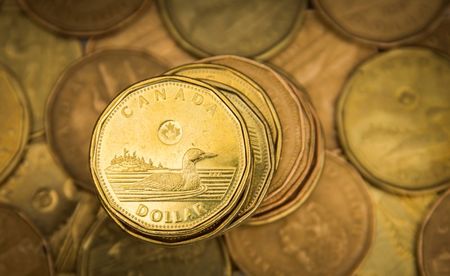Forex
UBS cautious on USD/CAD gains, sees rate cut by Fed later in 2023

On Friday, UBS expressed a conservative outlook on the potential for the U.S. dollar to strengthen against the Canadian dollar, despite recent gains. The financial services firm noted that the currency pair has approached the upper limit of its recent trading range and may not sustain levels beyond 1.40 for an extended period.
The USD/CAD pair has encountered resistance trading consistently within the 1.38–1.40 band since late 2022. UBS predicts this pattern will persist in the near term, even though the U.S. dollar might temporarily climb to 1.40. The firm anticipates that the Federal Reserve will cut interest rates later in the year, which could influence the currency pair’s trajectory.
UBS also indicated a cautious stance on the possibility of the Bank of Canada easing its monetary policy. This caution is due to the nature of Canadian inflation, which has recently declined, and the historical tendency for Canadian policymakers to align their decisions closely with those of the Federal Reserve.
The firm suggests selling the USD/CAD pair at levels starting from 1.39 over the next month, citing a slight increase in volatility for the pair as a supportive factor for this trade strategy. This perspective comes amidst a broader context of market movements and monetary policy expectations.
InvestingPro Insights
As market participants consider UBS’s cautious stance on the USD/CAD currency pair, it’s worth examining the performance of the U.S. dollar itself for a broader perspective. According to recent data from InvestingPro, the (DXY) has shown a varied performance over different time horizons, which could impact currency pair strategies.
InvestingPro data highlights a modest 1-week price total return of 0.08% for the DXY as of April 20, 2024, suggesting short-term stability in the dollar’s value. Over a 1-month period, the DXY has appreciated by 2.42%, indicating a more significant uptrend that traders might consider when evaluating the potential for the USD to strengthen against other currencies. However, a 6-month lookback shows a slight decline of 0.14%, reflecting some mid-term volatility in the dollar’s strength.
Year-to-date, the DXY has seen a price total return of 4.66%, aligning with UBS’s observation of recent gains in the U.S. dollar. The 1-year price total return of 4.05% also supports the notion that the dollar has been on an upward trajectory over a longer period. With the previous close at 106.15 USD, these metrics provide a quantitative backdrop to the currency pair’s movements.
InvestingPro Tips suggest that traders should keep an eye on central bank policies and macroeconomic indicators that could influence the DXY’s performance. For those looking to delve deeper into currency trading strategies, InvestingPro offers additional insights and tips. There are 15 more InvestingPro Tips available, which can be accessed with a subscription. To enhance your trading toolkit, use the coupon code PRONEWS24 to get an additional 10% off a yearly or biyearly Pro and Pro+ subscription.
This article was generated with the support of AI and reviewed by an editor. For more information see our T&C.

 Forex3 years ago
Forex3 years agoForex Today: the dollar is gaining strength amid gloomy sentiment at the start of the Fed’s week

 Forex3 years ago
Forex3 years agoUnbiased review of Pocket Option broker

 Forex3 years ago
Forex3 years agoDollar to pound sterling exchange rate today: Pound plummeted to its lowest since 1985

 Forex3 years ago
Forex3 years agoHow is the Australian dollar doing today?

 Cryptocurrency3 years ago
Cryptocurrency3 years agoWhat happened in the crypto market – current events today

 World3 years ago
World3 years agoWhy are modern video games an art form?

 Commodities3 years ago
Commodities3 years agoCopper continues to fall in price on expectations of lower demand in China

 Economy3 years ago
Economy3 years agoCrude oil tankers double in price due to EU anti-Russian sanctions


























